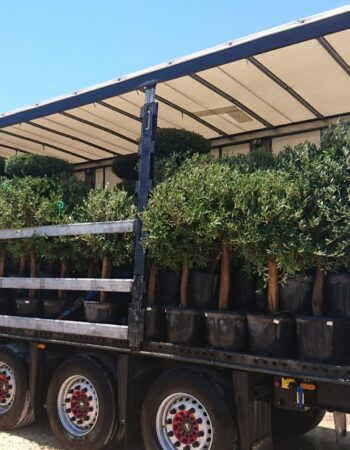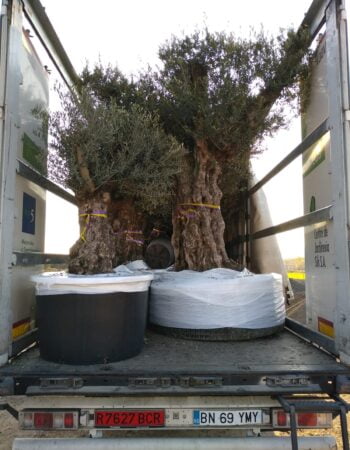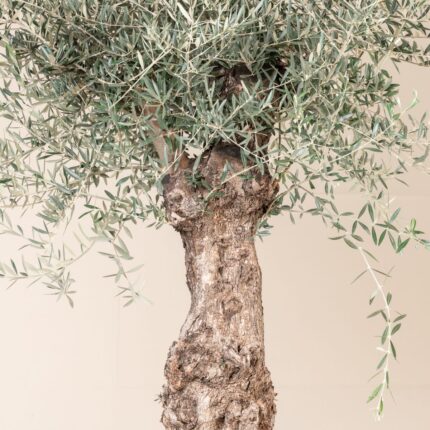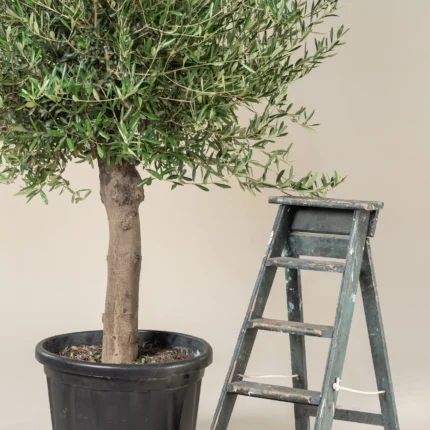LAGUNARIA PATERSONII
Lagunaria patersonii, commonly known as the Puka Tree or Norfolk Island Hibiscus, is a fast-growing evergreen tree ideal for warm, coastal climates. Drought- and salt-tolerant, it features dense foliage and bell-shaped pink flowers. Perfect for Mediterranean gardens, urban landscapes, and low-maintenance, sustainable designs.
Botanical Name: Lagunaria patersonii
Common Names: Árbol Puka, Árbol de la Espuma, Hibisco Piramidal
Mature Size: 6–10 meters in height, 3–5 meters in spread
Light Requirements: Full sun to partial shade
Soil Requirements: Well-drained soils; tolerates sandy, coastal, and moderately poor soils
Water Needs: Low to moderate; drought-tolerant once established
Foliage: Evergreen with dense, glossy, oval-shaped leaves
Flowers: Bell-shaped pink to mauve flowers with a hibiscus-like appearance, blooming in summer
Growth Rate: Moderate to fast
Uses:
Ornamental Tree: Lagunaria patersonii is valued for its upright, symmetrical form and attractive flowering display, making it ideal for urban landscaping, coastal gardens, and Mediterranean-style designs.
Windbreak and Street Tree: Commonly used in coastal areas as a wind-tolerant screen or avenue tree due to its resilience and structured shape.
Coastal Landscaping: Its salt tolerance and sturdy growth make it especially suited to seaside environments and exposed locations.
Benefits:
Drought and Salt Resistance: Performs well in dry climates and tolerates wind and salt spray, thriving with minimal irrigation.
Low Maintenance: Adaptable and resilient, requiring little upkeep beyond occasional pruning and caution when handling seed pods.
Pollinator Friendly: Its flowers attract bees and other beneficial insects, contributing to local biodiversity.
Visual and Structural Appeal: Offers long-term form, evergreen foliage, and seasonal floral interest, enhancing garden structure year-round.
Lagunaria patersonii is a robust, elegant, and environmentally adaptable tree that brings both ornamental value and ecological benefits to dry, coastal, or Mediterranean landscapes. Its hardiness, floral beauty, and suitability for public spaces make it a versatile and reliable choice in sustainable planting schemes-
Debes acceder para publicar una valoración.


CAREFUL TREE TRANSPORTATION
At Treezom, we take great care in transporting your trees to ensure they arrive in perfect condition. Our expert team uses various methods, depending on the size and volume of the order, to provide safe and efficient delivery. Whether you're ordering a single tree or a bulk order, we guarantee high standards of handling and care throughout the process.
MULTIPLE SHIPPING METHODS
- Truck Delivery: Ideal for local or regional deliveries, ensuring a smooth and timely shipment of your trees directly to your location.
- Sea Containers (20’ or 40’): Perfect for larger orders or international shipping. Our sea containers are equipped to handle bulk shipments with optimal protection.
- Other Customized Solutions: Depending on the size and nature of your order, we can offer tailored shipping methods to meet your specific needs.
No matter the shipping method, we use specialized packaging and handling procedures to protect the trees during transit, ensuring they arrive healthy and ready for planting.















 Single Tree
Single Tree
Valoraciones
No hay valoraciones aún.